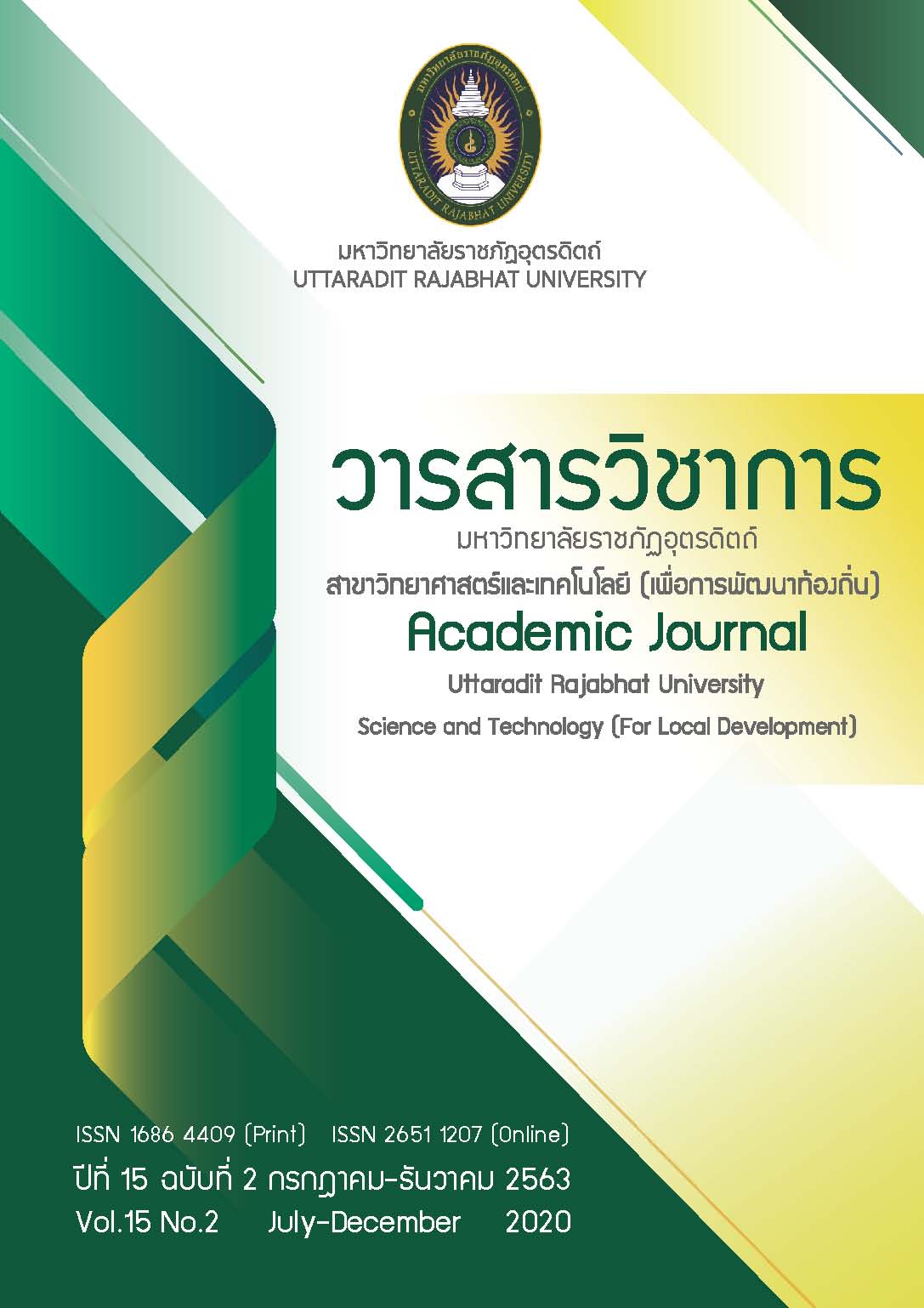ปัจจัยที่มีความสัมพันธ์กับคุณภาพชีวิตของผู้สูงอายุในชนบท จังหวัดเพชรบูรณ์
Main Article Content
Abstract
The present study aimed to investigate factors associated with the quality of life of the elderly in rural. We employed a cross-sectional analytical study by interviewing from participants including 968 elderly. Multi-stage random sampling was used in this study. Multiple linear regression was used to investigate the association between factors with quality of life. The majority of participants were female (60.54%), and the mean age was 71.00 years. About haft of participants were membership in club groups. About three of four of participants had chronic disease and had depression were normal level (94.73%). The participants had an overall quality of life were fair level (62.53%). Factors associated with quality of life were significantly such as having a relation within a family high level (β coefficient=13.47, 95%CI= 11.70 to 15.24), having a relationships with community high level (β coefficient=14.25, 95%CI= 12.35 to 16.15), widowed divorced status (β coefficient=-9.21, 95%CI= -11.75 to–6.67), having chronic disease (β coefficient= -1.69, 95%CI= -2.83 to -0.56), membership in club groups (β coefficient= 2.49, 95%CI= 1.48 to 3.50), ability in activities of daily living independently (β coefficient= 7.39, 95%CI= 3.66 to 11.13), and having severe in depression (β coefficient= -16.09, 95%CI= -27.04 to -5.15). The results of this study should be used as a guideline for agencies and communities to organizing activities to build relationships within a family and community to improve the quality of life. In addition, healthcare personals should be providing care for elderly who had poor quality of life, including assessment for depression and ability in daily activities for prevention the elderly.
Downloads
Article Details
References
Bornet, M.-A., Rubli Truchard, E., Rochat, E., Pasquier, J., & Monod, S. (2017). Factors associated with quality of life in elderly hospitalised patients undergoing post-acute rehabilitation: A cross-sectional analytical study in Switzerland. BMJ Open, 7(10). https://doi.org/10.1136/bmjopen-2017-018600
Chen, H.-M., & Chen, C.-M. (2017). Factors associated with quality of life among older adults with chronic disease in Taiwan. International Journal of Gerontology, 11(1), 12–15. https://doi.org/10.1016/j.ijge.2016.07.002
Eliasi, L. G., Rasi, H. A., & Tavakoli, A. (2017). Factors affecting quality of life among elderly population in Iran. Humanities and Social Sciences, 5(1), 26. https://doi.org/10.11648/j.hss.20170501.15
Fancourt, D., & Steptoe, A. (2018). Community group membership and multidimensional subjective well-being in older age. Journal of Epidemiology and Community Health, 72(5), 376–382. https://doi.org/10.1136/jech-2017-210260
Foundation of Gerontology Research and Development Institute(TGRI). (2019). Situation of the Thai elderly 2018 (Vol. 1). Printery Co.,Ltd. http://www.dop.go.th/download/knowledge/th1573033396-261_0.pdf
Gouveia, O. M. R., Matos, A. D., Schouten, M. J., Gouveia, O. M. R., Matos, A. D., & Schouten, M. J. (2016). Social networks and quality of life of elderly persons: A review and critical analysis of literature. Revista Brasileira de Geriatria e Gerontologia, 19(6), 1030–1040. https://doi.org/10.1590/1981-22562016019.160017
Hongthong, D., Somrongthong, R., & Ward, P. (2015). Factors influencing the quality of life (Qol) among Thai older people in a rural area of Thailand. Iranian Journal of Public Health, 44(4), 479–485.
Kafshgiri, M. Y., Garmaroudi, G., Amiri, F. N., & ardebili * H. E. (2017). A comparative study of the quality of life of the elderly between the members of the supportive community and the non-members. Caspian Journal of Reproductive Medicine, 3(2), 1–10.
Khan, A. R., & Tahir, I. (2014). Influence of social factors to the quality of life of the elderly in Malaysia. Open Medicine Journal, 1(1). https://doi.org/10.2174/1874220301401010029
Lena, A., Ashok, K., Padma, M., Kamath, V., & Kamath, A. (2009). Health and social problems of the elderly: A cross-sectional study in Udupi Taluk, Karnataka. Indian Journal of Community Medicine : Official Publication of Indian Association of Preventive & Social Medicine, 34(2), 131–134. https://doi.org/10.4103/0970-0218.51236
Molton, I., & Jensen, M. (2010). Aging and disability: biopsychosocial perspectives. Physical Medicine and Rehabilitation Clinics of North America, 21, 253–265.
https://doi.org/10.1371/journal.pone.0159293
Sincihu, Y., Maramis, W., & Rezki, M. (2018). Improve the quality of life of elderly through family role. Jurnal Kesehatan Masyarakat, 13, 374–381. https://doi.org/10.15294/kemas.v13i3.12024
Thomas, P. A., Liu, H., & Umberson, D. (2017). Family relationships and well-being. Innovation in aging, 1(3). https://doi.org/10.1093/geroni/igx025
Yodmai, K., Somrongthong, R., & Kumar, R. (2018). Determinants of quality of life among rural elderly population in Khon Kean province of Thailand. J Liaquat Uni Med Health Sci, 17(03), 180–184. https://doi.org/10.22442/jlumhs.181730574

